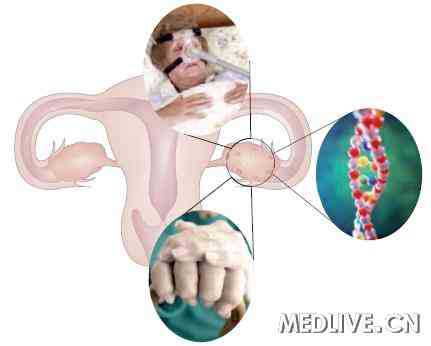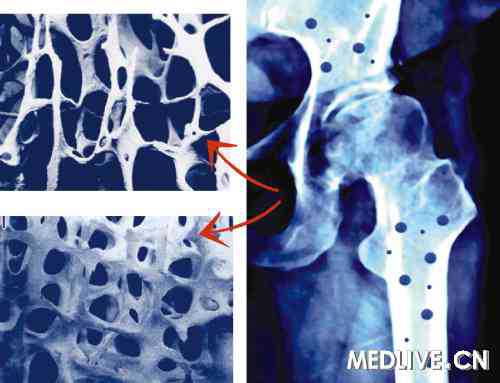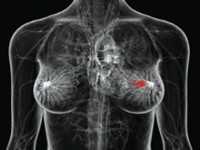Nature:两项研究证实上皮组织细胞数量控制或与癌症有关
2012-05-10 田天 中国科学报
如果一个上皮细胞层要保持其结构,并且为机体提供一个保护壁垒,它就需要在正在分裂的细胞数量与正在死亡的细胞数量之间维持平衡。虽然补偿细胞的分裂可能被死亡细胞所触发,但是,细胞死亡如何减轻细胞增殖所带来的“拥挤”,目前尚不明了。 4月26日出版的《自然》杂志同时发表了两篇有关上皮组织细胞数量控制的文章,指出维持上皮组织细胞平衡的机理可能与癌症有关。 英国伦敦大学学院分子细胞学实验室的Buzz Ba

如果一个上皮细胞层要保持其结构,并且为机体提供一个保护壁垒,它就需要在正在分裂的细胞数量与正在死亡的细胞数量之间维持平衡。虽然补偿细胞的分裂可能被死亡细胞所触发,但是,细胞死亡如何减轻细胞增殖所带来的“拥挤”,目前尚不明了。
4月26日出版的《自然》杂志同时发表了两篇有关上皮组织细胞数量控制的文章,指出维持上皮组织细胞平衡的机理可能与癌症有关。
英国伦敦大学学院分子细胞学实验室的Buzz Baum及其同事研究了果蝇组织中的这一过程,并在一个组织中的物理力与细胞损失的速度之间发现了一个直接联系。Baum研究小组的实验报告显示,在过分“拥挤”的组织区域里,一些细胞的“细胞粘性连接点”就会损失,并被相邻细胞挤出去。
活细胞分层的这一过程使上皮细胞能够缓冲生长中所发生的变化,并帮助实现正常的组织平衡。作为上皮增生与细胞分裂之间的一个联系,它可能与癌症发育的早期阶段有关。
另一方面,刊登在同期《自然》杂志上的第二篇论文指出,美国犹他州大学癌症研究所肿瘤学系的Jody Rosenblatt及其同事研究了上皮细胞单层,发现上皮在高度紧张的地方会将活细胞而不是正在死亡的细胞挤出去。而被挤出去的细胞会因为存活因子的失去而死亡。
因此,“挤出”可能提供一个肿瘤抑制机制,该机制可能被用来消除过剩的细胞。然而在具有高水平的存活信号通道的癌症中,“挤出”可能会促进肿瘤细胞入侵。

doi:10.1038/nature10984
PMC:
PMID:
Live-cell delamination counterbalances epithelial growth to limit tissue overcrowding
Eliana Marinari,Aida Mehonic,Scott Curran,Jonathan Gale,Thomas Duke& Buzz Baum
The development and maintenance of an epithelium requires finely balanced rates of growth and cell death. However, the mechanical and biochemical mechanisms that ensure proper feedback control of tissue growth1, 2, 3, 4, which when deregulated contribute to tumorigenesis, are poorly understood. Here we use the fly notum as a model system5 to identify a novel process of crowding-induced cell delamination that balances growth to ensure the development of well-ordered cell packing. In crowded regions of the tissue, a proportion of cells undergo a serial loss of cell–cell junctions and a progressive loss of apical area, before being squeezed out by their neighbours. This path of delamination is recapitulated by a simple computational model of epithelial mechanics, in which stochastic cell loss relieves overcrowding as the system tends towards equilibrium. We show that this process of delamination is mechanistically distinct from apoptosis-mediated cell extrusion6, 7, 8 and precedes the first signs of cell death. Overall, this analysis reveals a simple mechanism that buffers epithelia against variations in growth. Because live-cell delamination constitutes a mechanistic link between epithelial hyperplasia and cell invasion, this is likely to have important implications for our understanding of the early stages of cancer development.

doi:10.1038/nature10999
PMC:
PMID:
Crowding induces live cell extrusion to maintain homeostatic cell numbers in epithelia
George T. Eisenhoffer,Patrick D. Loftus,Masaaki Yoshigi,Hideo Otsuna,Chi-Bin Chien,Paul A. Morcos& Jody Rosenblatt
For an epithelium to provide a protective barrier, it must maintain homeostatic cell numbers by matching the number of dividing cells with the number of dying cells. Although compensatory cell division can be triggered by dying cells1, 2, 3, it is unknown how cell death might relieve overcrowding due to proliferation. When we trigger apoptosis in epithelia, dying cells are extruded to preserve a functional barrier4. Extrusion occurs by cells destined to die signalling to surrounding epithelial cells to contract an actomyosin ring that squeezes the dying cell out4, 5, 6. However, it is not clear what drives cell death during normal homeostasis. Here we show in human, canine and zebrafish cells that overcrowding due to proliferation and migration induces extrusion of live cells to control epithelial cell numbers. Extrusion of live cells occurs at sites where the highest crowding occurs in vivo and can be induced by experimentally overcrowding monolayers in vitro. Like apoptotic cell extrusion, live cell extrusion resulting from overcrowding also requires sphingosine 1-phosphate signalling and Rho-kinase-dependent myosin contraction, but is distinguished by signalling through stretch-activated channels. Moreover, disruption of a stretch-activated channel, Piezo1, in zebrafish prevents extrusion and leads to the formation of epithelial cell masses. Our findings reveal that during homeostatic turnover, growth and division of epithelial cells on a confined substratum cause overcrowding that leads to their extrusion and consequent death owing to the loss of survival factors. These results suggest that live cell extrusion could be a tumour-suppressive mechanism that prevents the accumulation of excess epithelial cells.
本网站所有内容来源注明为“梅斯医学”或“MedSci原创”的文字、图片和音视频资料,版权均属于梅斯医学所有。非经授权,任何媒体、网站或个人不得转载,授权转载时须注明来源为“梅斯医学”。其它来源的文章系转载文章,或“梅斯号”自媒体发布的文章,仅系出于传递更多信息之目的,本站仅负责审核内容合规,其内容不代表本站立场,本站不负责内容的准确性和版权。如果存在侵权、或不希望被转载的媒体或个人可与我们联系,我们将立即进行删除处理。
在此留言














#Nat#
63